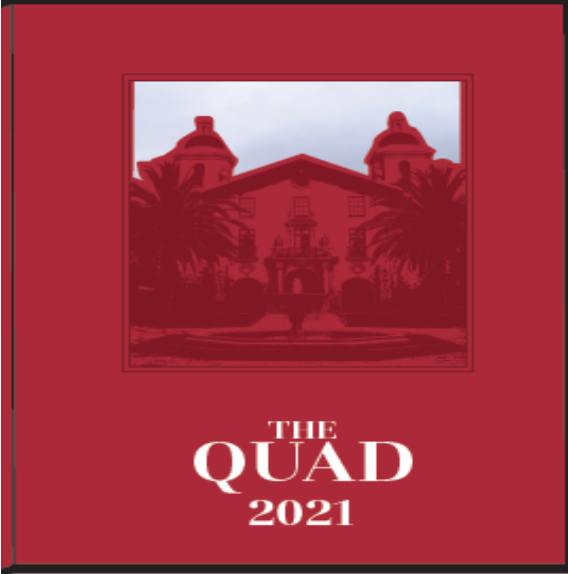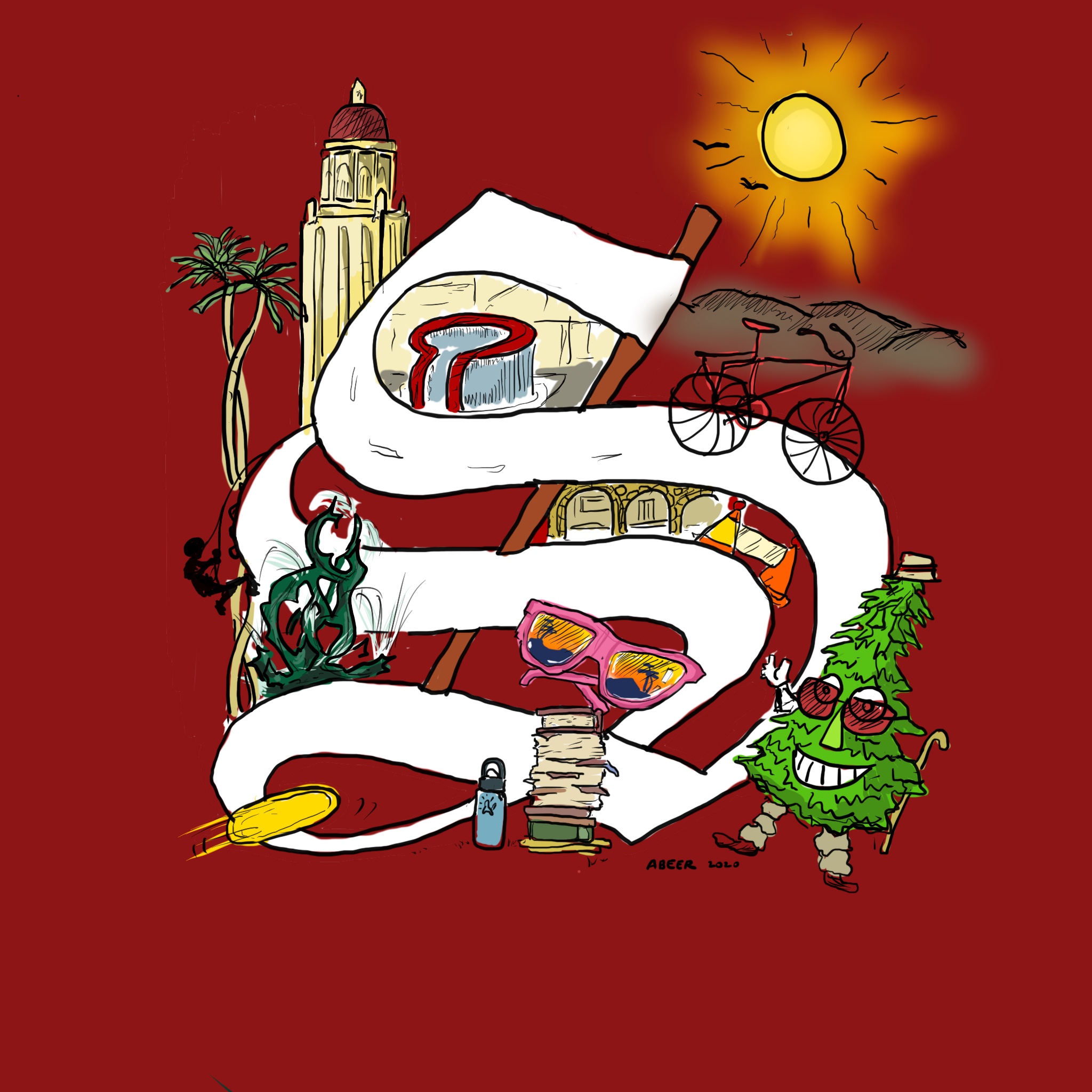
This week’s “Recs from the Vault” — capsule reviews of films I’ve loved during my time here at Stanford — we take a look at two little-known thrillers from 1968, a true-crime story that shocked the nation of Mexico, and a delirious rock musical from the Who and Ken Russell.
For last week’s “Recs from the Vault” and its writeups on films like Richard Lester’s “Petulia,” Charles Burnett’s “Killer of Sheep,” and Lucrecia Martel’s “La Ciénaga,” click here.
“Pretty Poison” (1968)
A truly wild thriller. Anthony Perkins (“Psycho’s” Norman Bates) is a con man and arsonist who’s just come out of a stint in a mental asylum. He pretends to be a CIA agent to impress the captain of the local high school’s cheerleading squad (Tuesday Weld). But Perkins keeps up the act for too long, and Weld starts to believe he is a CIA agent—to fatal ends. Perkins wants out, but he can’t get out—he’s just awakened a deadened suburbanite who grew up on true crime trash. Anthony Perkins starts out as the psycho who holds all the cards, but he ends up totally outdone by Weld’s slyly knowing blonde. He starts out the looker, she the looked; by the end, the tables have gloriously turned.
Nearly every shot is stunning in clarity and purpose, and a good number of director Noel Black’s images (Weld’s varsity legs splayed in a splits over a construction worker’s corpse while smiling like a bobby-soxer at boy-toy Perkins; Weld and Perkins disposing of another body while walking through lush suburban greenness, clothes hanging in the late-day sun, the sounds of Fido barking) are unforgettable in their social precision and perversity. It looks like an episode of a mid-60s TV crime drama—which works to the film’s advantage, giving it a “normal” edge and bolstering the barbed satire on suburbia.
Perkins and Weld would pair up again in the 1972 film adaptation of Joan Didion’s “Play it as it Lays.” 89 minutes. Color. ZDVD 26618.
“The Bride Wore Black” (1968)
François Truffaut’s delirious, patriarchy-skewering thriller (1968). On the day of her wedding, the husband of the bride (Jeanne Moreau) is shot to death in front of her eyes; she goes on a quest for revenge, brutally murdering each of the five men responsible. No matter what Tarantino says, I will never believe he hadn’t at least heard of this film before making “Kill Bill.”
Truffaut’s love and awe of women shows in every camera set-up. As in his “400 Blows” (a child who retreats to the world of cinema), “Shoot the Piano Player” (soft masculinity caught in the hard-edged webs of film noir) and “The Soft Skin” (adultery), Truffaut turns his camera on himself — male artist, a Romantic who bolsters women as much as reduces them to a type, critiquing as much as revealing. Moreau walks out of the film breezy, unrevealed, self wholly intact (at one murder scene, she leaves behind a little portrait, wanting to get caught but playing by her own rules). She’s given a role that is both a parody and the quintessence of her Jeanne Morose persona.
The film continues a marked trend towards Hitchcockian aesthetics present in Truffaut’s previous two films, “The Soft Skin” and “Fahrenheit 451.” But it’s not in slavish obedience to Hitch; Truffaut gleefully takes whatever rules from Hitch’s playbook convenience him, and adds his singular love of people and cinema that kept him barreling in his scruffy Nouvelle Vague days (1959-64), mixed in with flat, odorless color by Raoul Coutard. 107 minutes. ZDVD 1262, ZDVD 40222 DISCS 1-21 [a box set of all of Truffaut’s films].
“Canoa: A Shameful Memory” (1976)
This 1976 masterpiece about an under-talked massacre in modern Mexican history is at once a docudrama, a horror film, a travelogue, a Hawksian hangout picture, an elegy, an essay, a whodunit, a how-was-it-done and a radical political manifesto for moviemaking. Director Felipe Cazals traces the events leading up to and following the San Miguel Canoa Massacre of September 14, 1968 — two days before El Grito de Dolores, Mexican Independence Day.
The opening title card reads simply: Esto si sucedo (“this really happened”). Five university workers decide to take an impromptu hiking trip up a mountain. They stop over in the village of San Miguel Canoa, located at the base of the mountain. Because of a nasty storm, the workers decide to stay the night at the abode of the local pariah, Lucas (Ernesto Gómez Cruz). Lucas is ostracized for his critiques of the town’s dictatorial priest (Enrique Lucero). Lucas tells the workers about the priest’s disturbing control of the villagers’ minds. The priest has the mayor and the police in his pocket. He exploits villagers who don’t pay him tithes by humiliating them over loudspeakers (the village’s form of mass media). Eventually, the villagers get wind of the workers’ presence. They mistakenly assume that the workers are university students, and therefore Communists and heathens. Without having to do anything, the priest watches as his flock (worked up by him for weeks) gathers machetes and sticks and torches, rushes to Lucas’ abode, hack and shoots him in front of his family, and then proceeds to lynch the workers and torture the survivors.
It is an extraordinary film made during a particularly fruitful time in Mexican cinema history — the 1970s, when the government wanted to appear more open by allowing strong-voiced auteurs (Arturo Ripstein, Paul Leduc, Jaime Humberto Hermosillo, and Cazals, to name a few) to represent Mexico in the international cinema realm. It’s set in 1968: the year of youth riots across the world — the DNC riots in Chicago — assassination in the air — May ’68 in Paris. Mexico was hosting the Olympics that year, and the state wanted to appear more cohesive than it actually was. The events of Canoa took place a few weeks before the infamous Tlatelolco Massacre on October 2, 1968, where hundreds of university students and civilians were gunned down by the Mexico City police in an attempt to suppress youth revolt and dissent.
“Canoa” has the rage of a lit Costa-Gavras thriller (like 1969’s “Z”) while remaining coolly distant. There are no moving shots; it’s a series of still rectangles, history frozen in time, our memories playing back mundane events like cantando corridos aboard a bus with the horrible, unforgettable shots of the lynching of Ernesto Gomez Cruz. (“Canoa’s” supporting peasant characters speak the slang-filled, beautiful language of the everyday, and the movie is more convincing, fresh, and alive as a result.) When it raises itself into a fury, you need to shirk away, but you cannot.
With Salvador Sánchez as a Brechtian peasant known only as “The Witness,” who keeps up on all the chisme and layman’s politics. The perfectly constructed screenplay is by Tomás Pérez Turrent, and the cold, unmoving images are Álex Phillips Jr.’s. Color. 115 minutes. ZDVD 40608. ZDVD 40609 BLU-RAY.
“The Verdict” (1982)
In 1957, Sidney Lumet (“Dog Day Afternoon,” “Serpico,” “Network”) started his film career with the canonical courtroom drama, “12 Angry Men.” In 1982, he returned to the genre, a jaded survivor of the ‘70s, with “The Verdict.” This deceptively do-gooder film stars the lionlike Paul Newman in his graceful late period. Paul plays a alcoholic, Irish, ambulance-chasing attorney from Boston who lucks upon a solid case against a powerful Catholic hospital. From Day 1, the odds are stacked hopelessly against him; as Paul’s case for the prosecution becomes more frenzied, the defense becomes more calmer in its casual solidification of victory. From minute 1, the viewer is pummeled in the face with stellar images of misery (Paul drunkenly playing a game of pinball, his only source of pleasure). We don’t forget for a second the stranglehold of power held by the wealthy over the legal system—from the selection of jurors to witnesses to even their own victims in court. Not even the incredible outcome can reverse what “The Verdict” uncovers, in its deeply cynical view of the American law system. Sneakily, the American people (via the jury) find justice—in a situation which, in real life, would have gone the other way. The will of the people is both raised and then rejected; the chief feel of the finale is not glorious victory, but resigned emptiness in the face of pure, brilliant brutality.
James Mason, who specialized in playing charming British monsters (from “Bigger than Life” to “Lolita” to “Mandingo”), was nominated for an Oscar as the cold defense lawyer for the hospital. But Charlotte Rampling’s performance as a has-been lawyer who romances Newman is perhaps the most interesting. Rampling beautifully stages her character’s complex inner drama; she wants to help the underdog, but succumbs (in a delicious twist) to her mortal instinct: Working in her own best interest. Also with Jack Warden as Paul’s lawyer best friend, a rousing Lindsay Crouse as the surprise witness for the defense, and Milo O’Shea as the most hateful judge in American cinema. The screenplay was adapted from a Barry Reed novel by David Mamet. Nominated for 5 Oscars, including Best Picture, Director, Actor for Newman, and Adapted Screenplay for Mamet. Color. 129 minutes (they go by fast). ZDVD 14820 DISCS 1-2. ZDVD 3124. ZDVD 30989 BLU-RAY.
“Tommy” (1975)
Future post-La La Land directors, take note: study this one. I have no idea whose crazy idea it was to adapt the Who’s bizarre 1969 rock opera “Tommy” to the cinema. Nor do I know whose even crazier idea it was to have the bloody thing directed by Ken Russell, the master of 1970s British excess. But we need to thank her or him unil the end of time. The plot (not like it matters) concerns a deaf, dumb and blind boy (the Who’s Roger Daltrey), who endures torture at the hands of some pretty weird family members, becomes a pinball god and starts a religion devoted to his luscious blonde locks and mad pinball skills. The idea sounds ridiculously pretentious, but it plays better than it has any right to.
The first hour of “Tommy” is bananas: 5-Hour-Energy cutting, reckless zooms, savagely hedonistic sets, overacting from Ann-Margret as if the future of Western civilization depended on her bathing in champagne and baked beans. Tommy’s parents sing with schizoid-camp grit: half Broadway broadness (Ann Margret), half boozy badness (Oliver Reed-y, with a voice to match). The supporting cast is the Who’s Who of the biggest stars in pop culture in 1975. In “Eyesight to the Blind (The Hawker)”, Eric Clapton preaches for the Church of Marilyn Monroe in a number that doubles as Ken Russell’s über-bad-taste takedown of celebrity culture — the bread and wine are MM’s pills and a handle of Jack Daniels. Elton John’s pinball wizard lolls his tongue around as his big boots fail to trip overgrown Tommy, a deaf-dumb-blind Messiah who Snapchats God in his mind palace. Tina Turner is the Acid Queen, whose twerking face fills up the screen in gelatinous close-ups, whose trippy red room looks shuttled in from an Vincente Minnelli musical pumped with molly. And say, is that Jack Nicholson? And Keith Moon?
When Tommy finally learns how to sing like Roger Daltrey, “Tommy” becomes semi-serious about wanting to say something about Culture and Civilization and Society. Thus, it loses the bonkers edge of its first half, which made some weirdly insightful observations about culture and civilization and society. (Obsession with bodily fluids through the semen and shit puns of “Champagne” is the glorious climax.) One of the greatest of all Freakishly Mannerist musicals. Watching this with my grandmother, who loved it, is one of my most treasured memories of her. Color. ZDVD 2029.
Contact Carlos Valladares at cvall96 ‘at’ stanford.edu.





